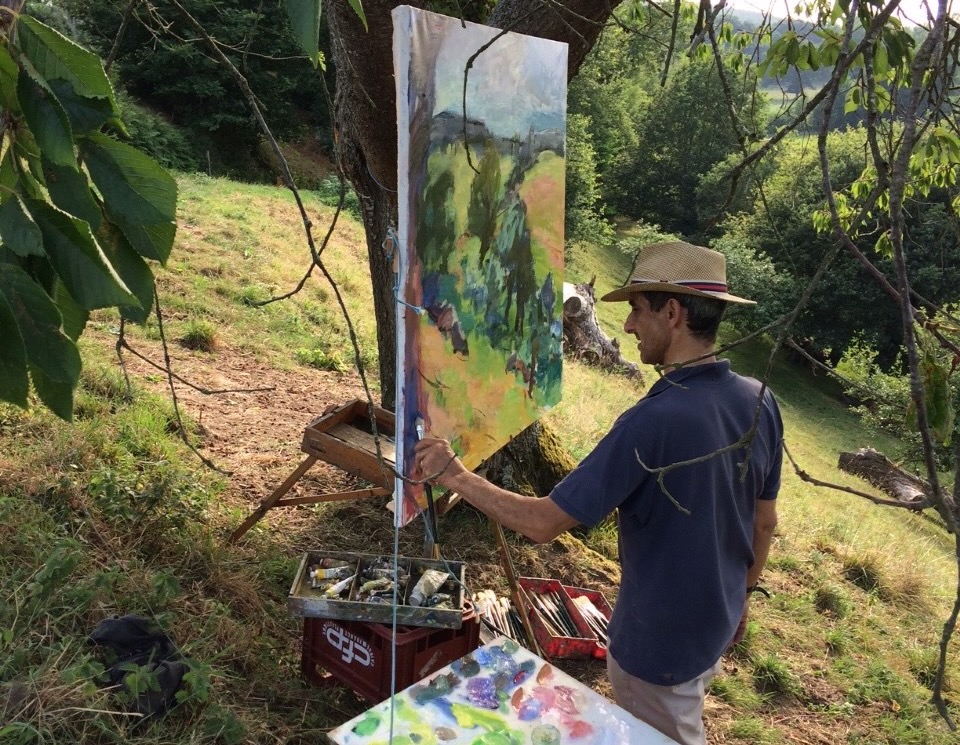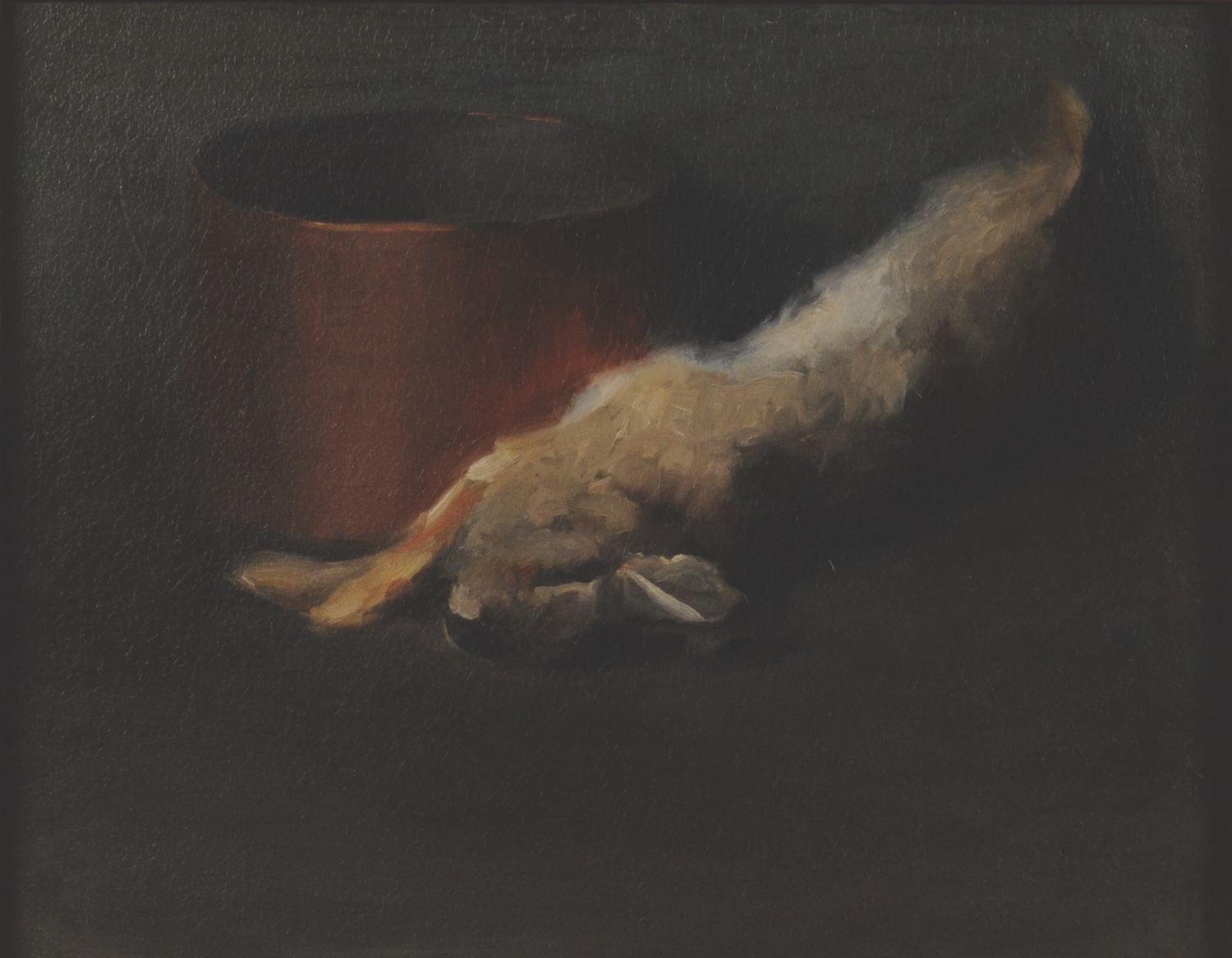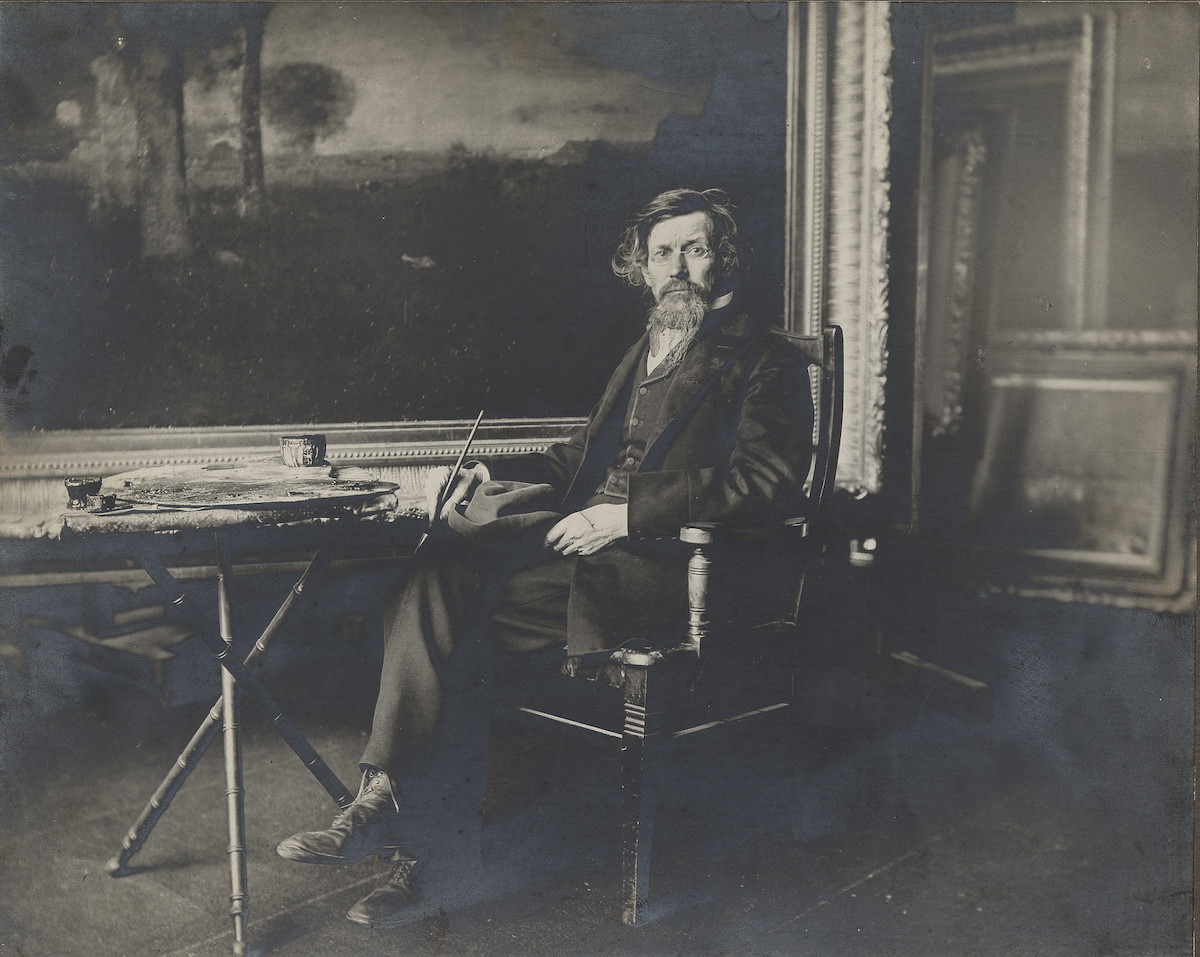
This country has given rise to a lot of good landscape painters and a few great ones, artists who chronicled the nation’s early Arcadian fantasies, industrial incursion, and urban expansion. Two painters, each unique in their conception of nature, are indispensable. Of course, neither Winslow Homer nor George Inness appeared out of thin air. They grew out of the same traditions as did their late nineteenth-century contemporaries. Homer’s works owe something to the Hudson River school’s celebration of unspoiled nature, and he was aware of developments in French painting, but as the recent retrospective at the Met reminded us, the landscape was for Homer a catalyst for conflict and a reservoir of concrete fact: the diagonal of a mountainside slicing through clouds, water striking rock, man and animal fighting for their lives.
Inness’s ideology could hardly have been more different. He came directly from the Hudson River tradition, with affinities to the Barbizon painters and a respect for classical composition strengthened by studies in Italy. Where Homer was obsessed with mortality, Inness’s natural world was characterized by mutability. I’m referring less to changes of weather or season than the mobile tension between substance and spirit. Inness was a follower of Swedenborgianism, whose founder, the Christian theologian and mystic Emanuel Swedenborg, claimed to have traveled freely between the material and spiritual worlds. The work of Inness’s maturity seeks a similar balance, without resorting to overt religious symbolism. One of the implicit pleasures of Inness’s painting is that he prefers contemplation to rhetoric. “The true use of art is, first,” Inness stated, “to cultivate the artist’s own spiritual nature.” Best mission statement ever.
Inness’s effectiveness at giving shape to the ineffable can be gaged at George Inness: Visionary Landscapes, recently installed at the Montclair Art Museum. These landscapes invoke Inness’s works in other collections, which I’m including here for reference. Modest in scale, the Montclair’s installation draws from the museum’s permanent collection, which includes examples of the artist’s work at most phases of his career. Inness was born in Newburgh, New York, in 1825, and lived much of his childhood in New York City and Newark, New Jersey. He studied at the National Academy of Design, made numerous lengthy painting trips to Europe, and traveled freely in the Northeast, living and renting studios in Massachusetts, New York City, and New Jersey. Inness began staying in Montclair, New Jersey, in 1876, eventually settling there. He continued to travel in the 1890s, wintering in Florida, and died in 1894 while visiting Scotland. In December of that year, a memorial exhibition of 240 works by Inness opened on the first floor of the American Fine Arts Society building, the home of the Art Students League of New York. Previously Inness had lectured at the League’s composition class and participated in several group shows.
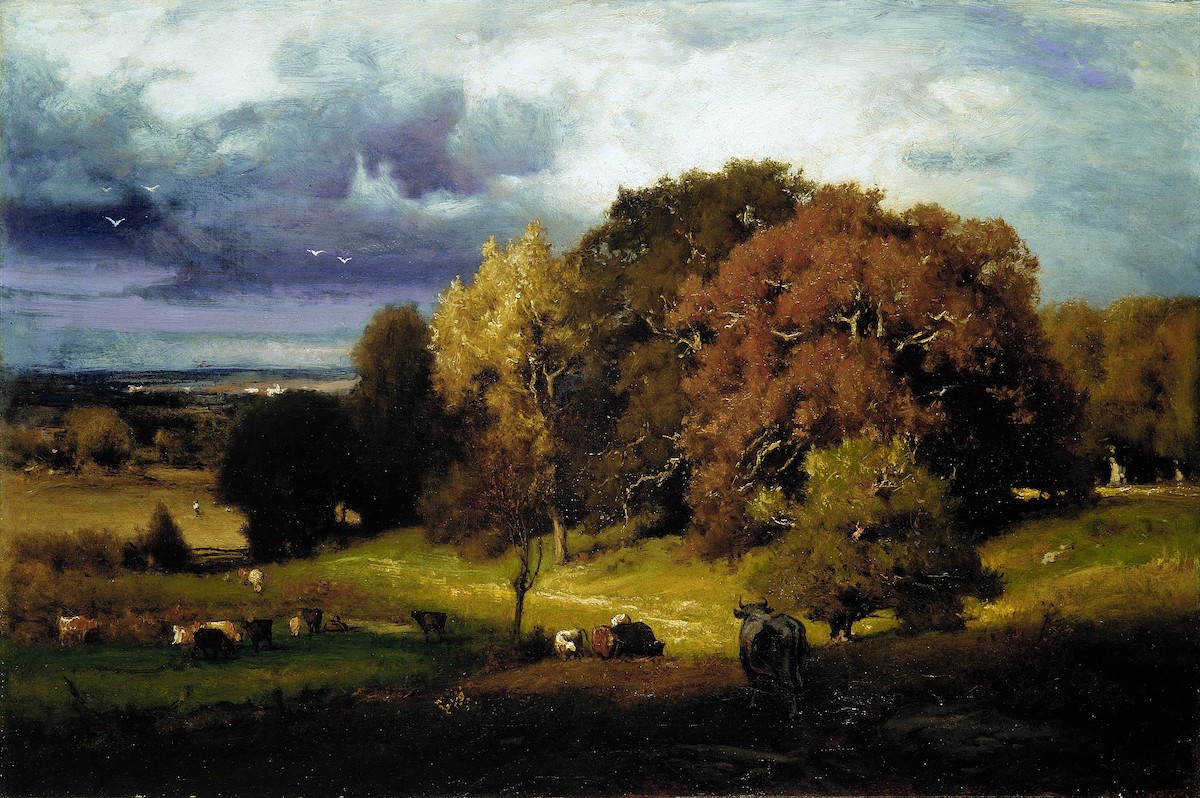
My fascination with Inness dates at least from the summer of 1980, the first season I devoted to painting outdoors. A friend and fellow student who accompanied me on a plein-air trip to upstate New York had recently purchased a thin volume on Inness’s work from the League art store. It immediately went missing. A mutual friend was deemed the likeliest suspect, and it says something that the collegiality of a few young artists was jeopardized not by professional or romantic rivalry, but by the theft of a book on Inness. Interest was rekindled by a retrospective at the Metropolitan Museum of Art in 1985, another at the National Academy of Design in 2003, and several shows at the Sterling and Francine Clark Art Institute, each one bestowing what can best be described as a jolt of pleasure. The Met show crystallized an appreciation for works from distinct periods: the layered sky of Clearing Up (1860), with its reference to Barbizon painting; Autumn Oaks (c. 1877), the romantic masterpiece of the middle period; and the moving Early Autumn, Montclair (1888), which I’ll return to later. The National Academy show featured the generically titled Landscape (1888), from the Cleveland Museum of Art, a painting I still haven’t gotten over. For some forty years I’ve traveled northeast countrysides looking for “Inness trees,” occasionally finding one monumental enough upon which to hang a sentiment.

“The real difficulty,” Inness said in an 1879 interview, “is in bringing the intellect to submit to the fact of the undefinable.” I’m loath to explain the hold of Inness’s late work, partly because the ground has been amply covered by generations of writers, and also for the same reason one hesitates to quantify any form of love, for fear of dissipating its magic through analysis. Submitting to the fact of the undefinable describes our intuitive attraction to certain artworks, but it’s a tough foundation upon which to build a pedagogy. Yet one can’t write without making a run at it. Cleveland’s Landscape is, like Inness’s best paintings, airtight in its two-dimensional design and deeply atmospheric as a three-dimensional space. His foliage masses and bare branches are eccentric and convincing; there’s nothing like them in American painting. The fog that permeates his canvases is neither a meteorological phenomenon nor evidence of optical deterioration; it is Inness’s assertion that the material world we perceive is an illusion, a pale reflection of Swedenborg’s ultimate, divine reality.
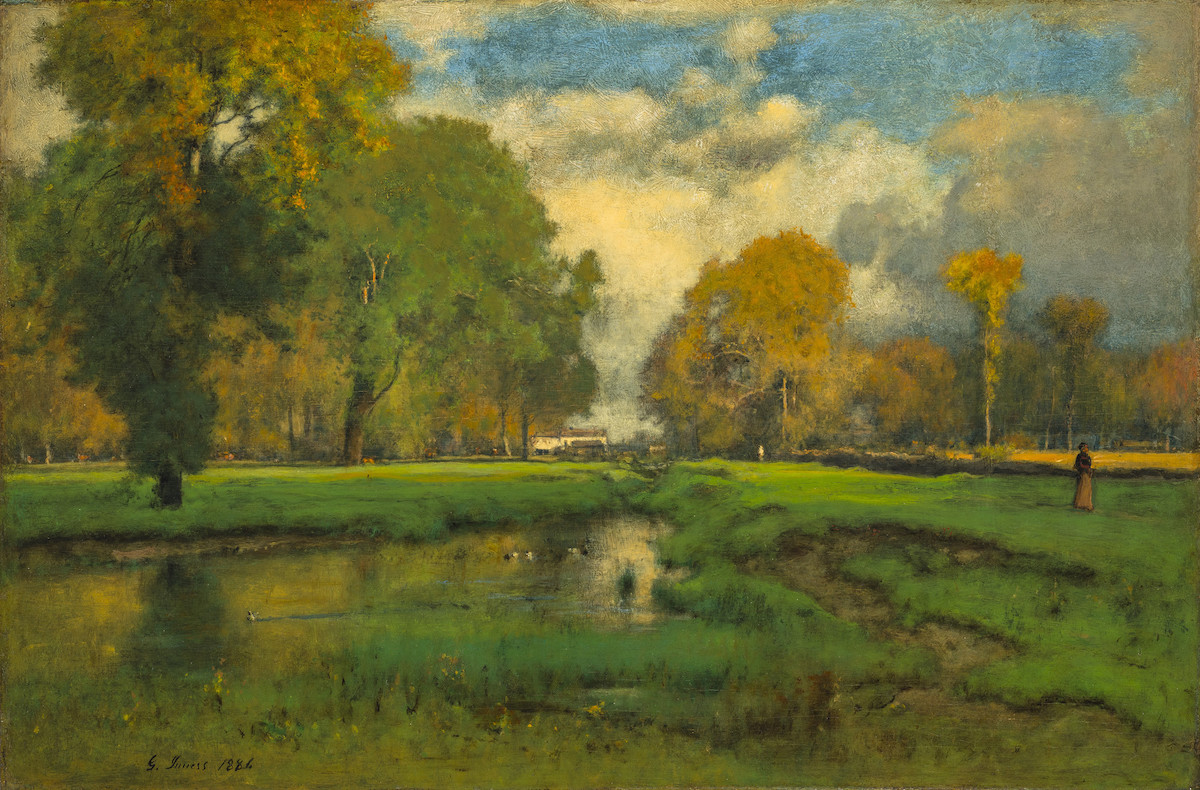
The evolution of Inness’s development can be followed through the installation at Montclair. Delaware Water Gap (1857), shows a youthful mastery of the mid-nineteenth century panoramic convention. Satisfying in both breadth and details, the middle distance features an assortment of oddly shaped trees delineated against a bend in the river, a premonition of the expressive possibilities he would find in the landscape years later. Winter Moonlight (Christmas Eve) (1866), is a looser and more evocative work. Painted after Inness had begun following Swedenborg’s teachings, it depicts a lone traveler on a snow-covered path, his form silhouetted by the light of a full moon. Across from it hangs Winter Morning, Montclair (1882), an unusually naturalistic work given the date. The human presence is again humble in scale, yet it is devoid of the romantic narrative of the earlier winter nocturne. Without a path to lead the viewer into the painting, the composition is less conventional, and the cold snap and slightly dreary mood are mitigated by russet foliage. As much as any canvas from the Montclair years, Winter Morning looks like it could have been painted on the spot.
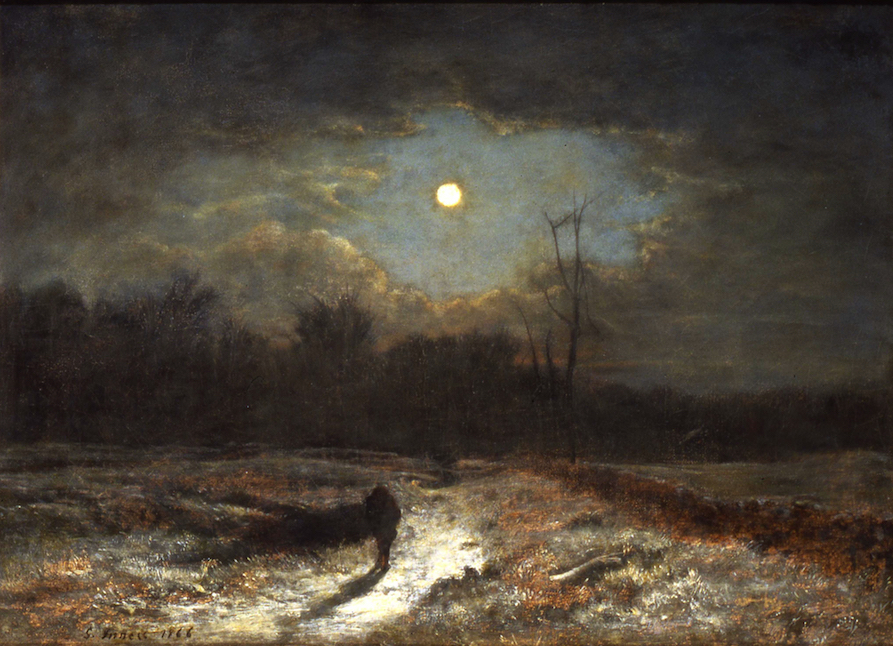
That’s not the case with Sunset Glow, painted the following year, which shares the predilection for trees arranged at irregular intervals across the horizon that would become a prominent feature of Inness’s later work. Like most of the artist’s paintings, it was certainly invented in the studio. By the 1880s, Inness had the confidence of a lifetime of study, and could trust his memory to summon forms and places to lend authenticity of detail to increasingly abstracted images. A colleague recalled that “Inness used to say that his forms were at the tips of his fingers, just as the alphabet was at the end of the tongue.” The work of the 1880s and 90s balances sophisticated formal design with these visual memories to powerful emotive effect. The museum’s finest painting by Inness, Early Autumn, Montclair, exemplifies the technical virtues of the artist’s last decade. The canvas is bisected by the horizon line. An overgrown field comprises the lower half, and at the center stands a grand specimen, its formerly green foliage overtaken by the season’s burnt orange. Flanking it at left are a low spreading apple tree and a distant house or outbuilding to the right. Idiosyncratic tree forms are enlivened by irregular branches and stray tufts of foliage. The main tree is silhouetted against a burst of white clouds, and across the top of the canvas runs a heavy black cloud bank. One imagines this was a late addition to the painting, an improvised framing device that lends an ominous note.
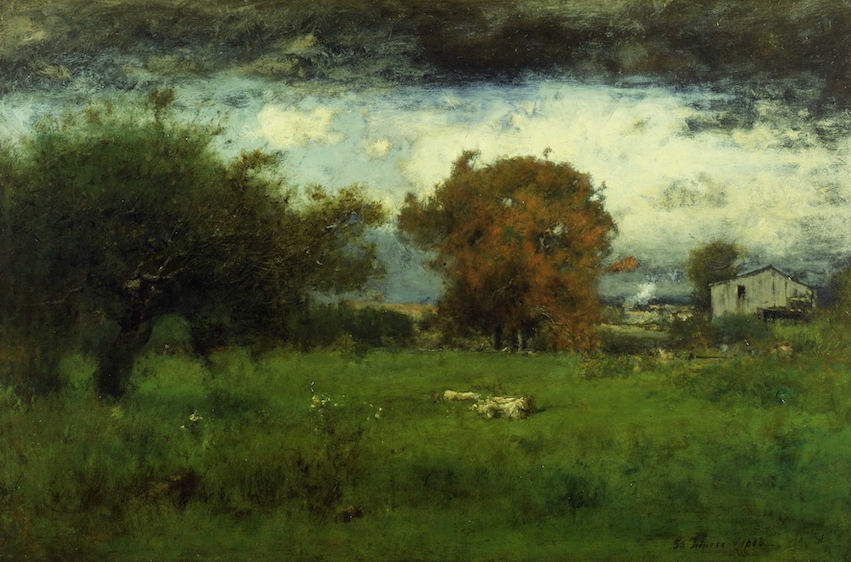
The charged atmosphere is heightened by the paint handling, laid on thickly in some passages and scumbled in others, branches scratched out with the butt end of a brush, oily brushwork presumably laid atop a previous composition. Inness frequently painted over old work, and the layering of color and complex tactile surfaces energize many late works. It also contributes to the richly variegated coloring, especially of autumn subjects. My initial thesis was that Inness was the preeminent painter of trees. After several New England backroad drives this weekend, I’m inclined to make the same claim on his behalf as the painter of the post-autumnal equinox. Nobody else is really close, in part because Inness wasn’t trying to replicate the chromatic riots celebrated by the previous generation of landscape painters, and to which artists continue to fall prey. The landscapes he invented are truer to the spirit of the season than are most literal transcriptions. The skillful design of Near the Village, October, in Cincinnati, looks like something we’ve seen, though it’s a brilliant fiction. Groves of trees—as in the Met’s Autumn Oaks, or the Los Angeles County Museum’s October—are held together by a cohesive value and intensity, which then allows some room to play with hues. Inness could visualize and mass large areas, so that isolated details never break the abiding atmospheric impression. Early Autumn, Montclair, resolves the issue with sober tones, the most provocative color reserved for the central tree. Some of this is Painting 101 stuff, but implemented with such elegant drawing and profound spiritual devotion that it rises above the Tonalist designation to which Inness’s painting is often consigned, and occupies its own place in American art.
That place was assured well before Inness’s last decade. From the mid-1880s, he seemed to be reckoning with mortality on his own terms, when his pastoral scenes took on the patina of autumn late afternoons. To see these paintings as merely nostalgic is to misconstrue the gravity of their beauty. Inness wasn’t looking back, but ahead, through the haze of the hereafter.
George Inness: Visionary Landscapes remains on view at the Montclair Art Museum through June 30, 2024.
JERRY WEISS (@jerrynweiss) teaches Drawing from Life and Painting and Drawing from Life at the Art Students League of New York.



